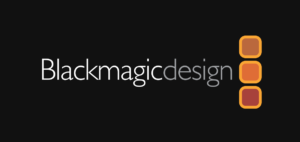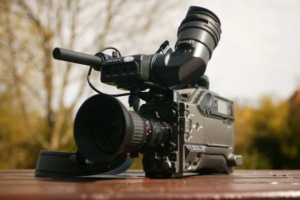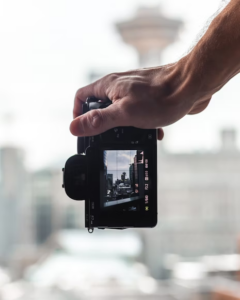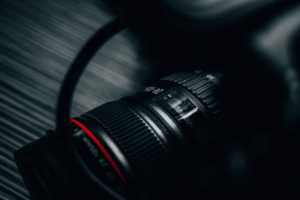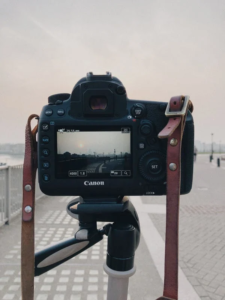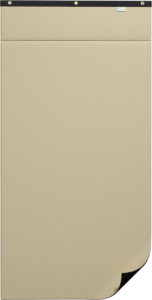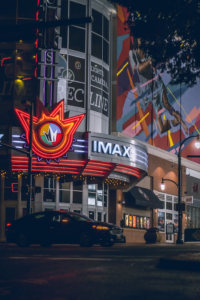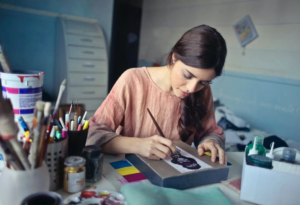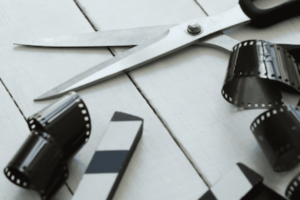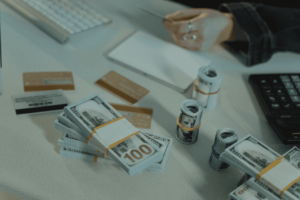Film theory is a way of analyzing films to understand them and their place in society better. Film theorists break down films by looking at their elements and the way they impact one another. Film theory can also be applied to other video presentations, such as television programs. Film theory is not the same as film criticism, which concerns analyzing a film to determine its value. Film theory also differs from film history, which tracks changes in film trends over time.
The History of Film Theory
Film theory began in the 1920s because filmmakers wanted to understand film elements and how they could make their own films more meaningful and effective. Early film theory analyzed camerawork and editing. In the mid-1940s, film theory’s focus shifted towards analyzing the way film could capture reality. In the 1960s, film theorists became influenced by academic fields including psychology and gender studies. As filmmaking entered the 1990s, film theorists began analyzing the differences between films made with new digital and old analog technology. Fractured viewing habits have led modern film theorists to study where and how society experiences movies.
The Elements of Film Theory
Film theory analyzes films by examining eight key elements:
Film Type
Film theorists categorize films into three main types:
- Realism: Showing an unfiltered and realistic world. Uses natural lighting and often nonprofessional actors, with minimal editing and no special effects
- Classical: Emphasizes authentic moments while using creative production elements. Uses professional lighting and actors, but with little to no special effects and editing only for time passing
- Formalism: Showing an altered reality created by the director. Uses professional actors, special effects, creative lighting, and sound effects
Camera Shots
Film theorists analyze how different camera shots convey messages and moods. These shots include:
- Extreme close-up
- Close-up
- Medium shot
- Full shot
- Long shot or wide shot
- Extreme long shot/extreme wide shot
- Deep focus
- American shot
- Over the shoulder shot
- Point of view shot
Camera Angles
Film theorists also examine the way camera angles make viewers feel. Filmmakers can manipulate their viewers’ emotions based on the camera angles they choose. The four main camera angles are:
- Eye-level
- High angle
- Low angle
- Oblique angle
 Image via Videomaker
Image via Videomaker
Lighting
A film’s lighting can also create mood. Comedy typically uses high-key lighting to set a light-hearted mood. The low-key lighting of film noir sets a much darker, more intense mood. Blending lighting styles can create new moods. Film theorists recognize the following lighting types:
- High-key lighting
- Low-key lighting
- Chiaroscuro lighting
- Silhouette/black lighting
Color
Film theorists recognize the impact of two main kinds of film color:
- Saturated: Vivid color used for fantasy, romance, and conveying happiness
- Desaturated: Muted color used for dystopian films and conveying depression and struggle
 Image via Videomaker
Image via Videomaker
Sound
Sound is another key element that film theorists analyze. There are two key types of film sound:
- Diegetic: The sounds characters could hear because their source is onscreen or offscreen and part of the film’s action. This includes character voices and the sounds of props and instruments in the film.
- Nondiegetic: The sounds characters do not hear because they occur outside the narrative. This includes narration and a film’s score.
Editing
Film editing goes unnoticed by many people, because it’s intended to make a story flow. However, film theorists understand the ways the following editing types impact films:
- Continuity: Collapses space and time while maintaining fluidity
- Radical subjective continuity: Dramatically cuts shots in different times and spaces
- Classical: Dramatically jumps from long shot to medium shot to close up
- Thematic: Cuts shots to show a common theme
- Dialectic: Cuts shots to show a contradiction
- Associative: Juxtaposes two shots to create a shared meaning
Mise-en-scene
Mise-en-scene is a French term meaning “placed on the stage.” It refers to the items in front of the camera and how they’re arranged. Common terms used to describe mise-en-scene include:
- Placement around frame
- Face to camera (quarter turn, half turn, three quarter turn, full turn, back)
- Territorial space (background, midground, foreground)
- Frame constraints (tight for intensity, open for showing desolation or freedom)
How to Read a Film
Film theorists read films by paying attention to the choices that directors, cinematographers, editors, and other creatives make. These choices help convey a film’s message and arouse emotions in viewers.
Why Film Theory Matters
Film theory matters because it helps us understand the films we watch on a deeper level. Through film theory, we understand individual films and their relation to others made by the same creatives, in the same time or place, or of the same genre. We also understand how different film movements and creatives influenced one another.
Film theory is valuable to everyone who enjoys film, but it also helps people who create films. Screenwriters, directors, producers, and other creatives can make more informed choices after learning the power of different film elements.
Some Film Theory Focuses
Some people approach film theory with a particular perspective. They use the perspectives of different film movements to frame their film analyses. Below are some common film theory focuses.  Image via Videomaker
Image via Videomaker
1. Apparatus Theory
Popularized in the 1970s, apparatus theory suggests all films reflect reality in some way. It declares that every film element has meaning. People who believe in apparatus theory think they can learn more about a film’s meaning by analyzing the meaning of its elements.
2. Formalist Theory
The formalist theory analyzes the way a film’s technical elements impact viewers. This theory looks for meaning in camera shots, editing, lighting, and sound.
3. Structuralist Theory
The structuralist theory believes all films have a basic, underlying structure. This structure is built on recurring patterns, such as themes and motifs. Structuralist theorists believe we can understand films and groups of films better by comparing their structural elements.
4. Auteur Theory
Developed in the 1940s by François Truffaut, auteur theory believes the director, not the screenwriter, is a film’s ultimate author. That’s because directors manage all their films’ visual and audio elements. Some modern auteur theorists believe directors need a certain amount of experience to become auteurs.
5. Marxist Film Theory
Marxist film theory concerns the relationship between filmmakers, their films, and the audience. It analyzes the way certain film elements can influence audiences’ feelings and reactions.
6. Feminist Film Theory
Feminist film theory is a spinoff of feminist theory and feminist politics. It believes that since men make most films, actresses are often forced into stereotypical female roles that negatively impact them. Laura Mulvey and Bracha Ettinger are two key feminist film theorists.
Modern feminist film theorists use the Bechdel Test to determine if a film represents women well. This test checks whether films feature scenes with at least two women talking about something other than a man. Feminist film theorists hope they can encourage filmmakers to make more female-positive movies.
7. Queer Film Theory
Like feminist film theory, queer film theory believes a majority controls the film industry, thus disadvantaging the minority. In this case, the theory believes most movies are made by straight people who limit or compromise queer perspectives. They also aim to change the status quo and champion better queer representation in film.
8. Genre Studies
This type of film theory analyzes films of specific genres and their common themes and tropes. It also examines what popular genres and their films say about society. For example, genre studies theorists might analyze the link between cop movies and toxic masculinity.
Notable Film Theorists
People interested in film theory often examine the work of prominent film theorists. In addition to the film theorists mentioned above, the following film theorists made fascinating observations:
- Germaine Dulac
- Dziga Vertov
- Lev Kuleshov
- Sergei Einsenstein
- André Bazin
 Image via Videomaker In addition to these influential names, people interested in film theory can also learn from online sources such as David Bordwell’s blog, StudioBinders, and The Film Theorists YouTube channel.
Image via Videomaker In addition to these influential names, people interested in film theory can also learn from online sources such as David Bordwell’s blog, StudioBinders, and The Film Theorists YouTube channel.
Film Theory Careers
Studying film theory can lead to a variety of different careers. Some film theory students use their knowledge in the following roles:
- Film professor
- Film critic
- Film creator
Film theory is a fascinating topic area that can benefit a variety of professionals and anyone interested in movies. You can learn more about film theory and how you can improve your skills by applying to the Nashville Film Institute here.
